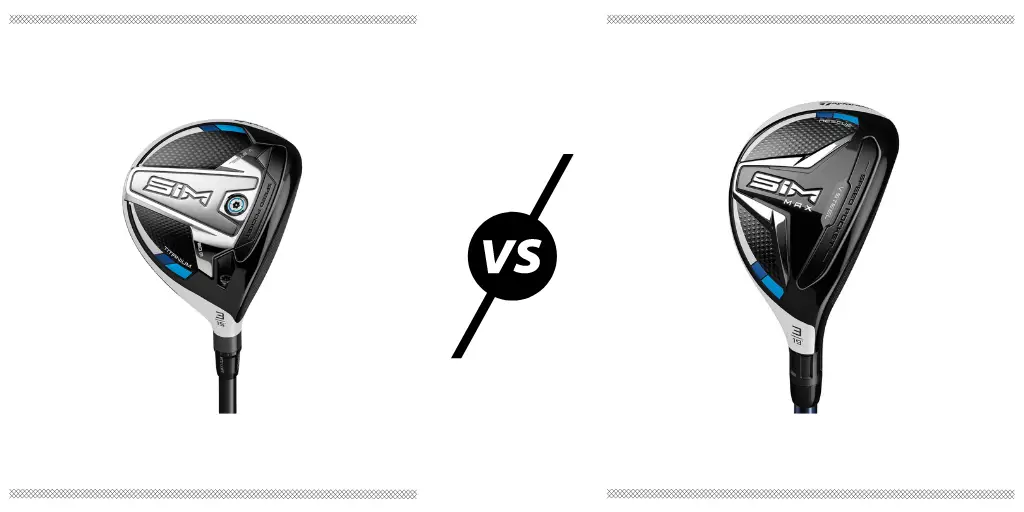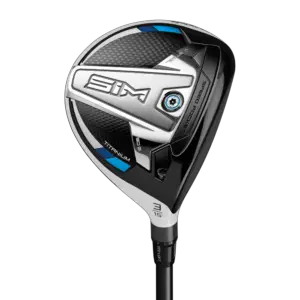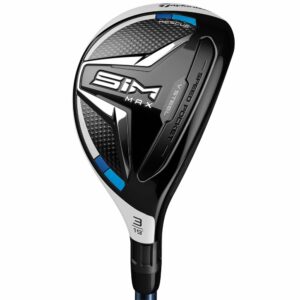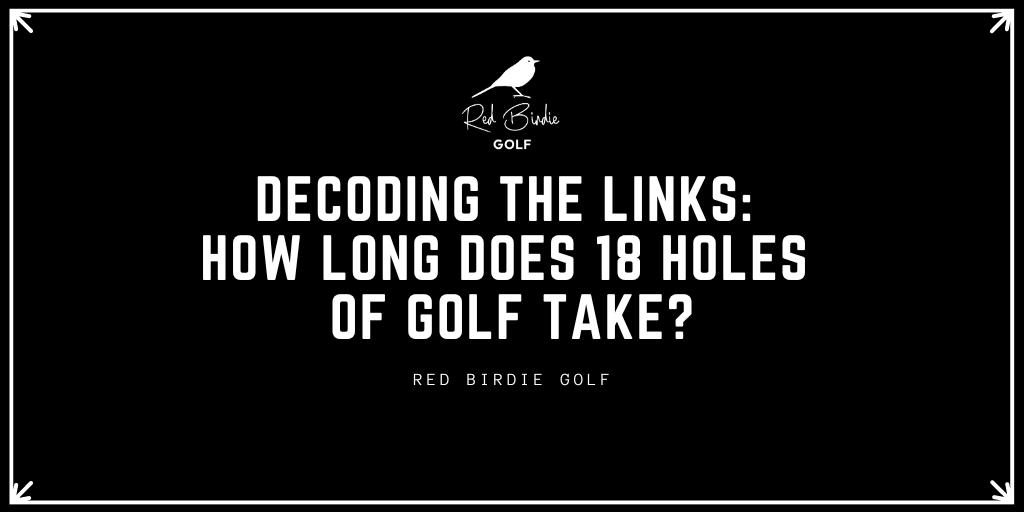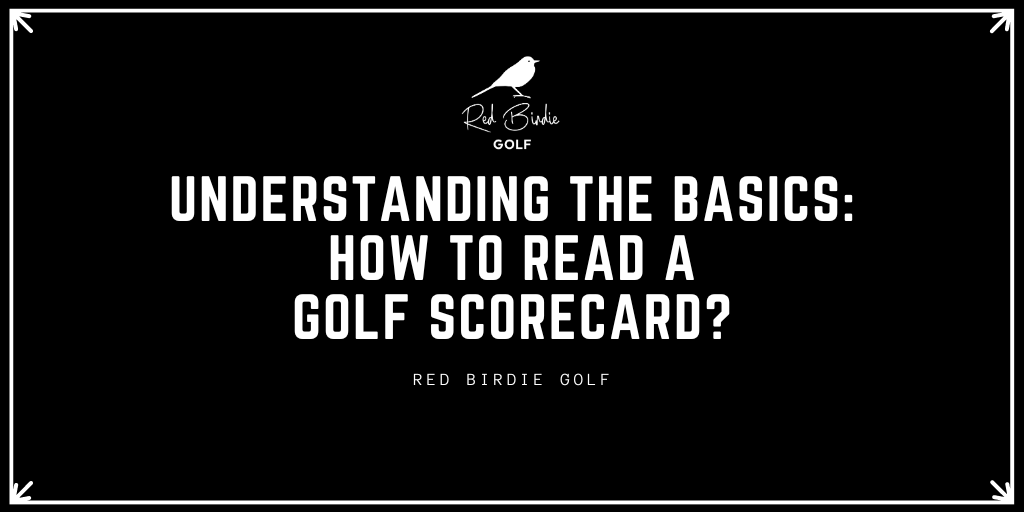Hybrids and fairway woods look somewhat similar, but the roles they play for golfers, the way they are constructed, and even the way they are swung are very different.
The “hybrid vs fairway wood/long iron debate in golf is kind of the “old school vs new school” debate that you see in almost every aspect of life.
Hybrids are easier to hit than long irons and they fly higher and land softer than fairway woods. While almost every golfer carries at least 1 of each, it seems like hybrids are growing in importance throughout the golf world and especially for higher handicap players.
The following article is a Fairway Wood vs Hybrid review. Our goal is for you to understand the differences and similarities between the clubs and to decide which clubs are most important for your bag.
Introduction to Fairway Woods and Hybrids
Fairway Wood
Fairway woods have been around pretty much since the game of golf existed. They are very forgiving and very easy to hit compared to their long iron counterparts.
They are shaped like a mini-driver and recent years have seen more and more higher lofted fairway woods flood the market.
The 3-wood is the staple club of every golf bag and most low handicappers still carry a 5-wood as well. As 7, 9, and 11 woods have come onto the market, many seniors and higher handicap players began taking longer irons out of play and replacing them with these new higher lofted woods.
One of the reasons fairway woods are so popular and so much easier to hit is that the “sweeping motion” required for a good fairway wood shot is considerably more natural feeling to many golfers than the descending blow required to hit an iron well.
In addition, most fairway woods have much bigger sweet spots and are more forgiving than long irons are. Fairway woods also provide golfers with a lot of flexibility in their shots.
They can replace the driver off the tee, punch the ball out of the woods, hit a long approach shot on a par-5, and even aid in chipping around the green.
Pros
- Fairway woods are great distance clubs that you can hit long and low off the deck or the tee.
- Pretty much every golfer carries at least a 3-wood and most carry more than one fairway wood, and there is no sign of that stopping any time soon.
- Club manufacturers pour money into driver technology, and now most high end 3-woods feature the same head and face technology that you find on high end drivers.
- Fairway woods are great off the deck and off the tee and provide golfers with a lot of options all over the course, especially with the wide array of lofts available in most fairway wood brands.
Cons
- You need a good lie for a fairway wood to be effective.
- They are generally not as good for longer approach shots, and this long approach is becoming more and more important as golf courses get longer and longer.
Hybrid
Hybrids were developed and have risen in prominence mainly because long irons are just really difficult to hit well. They offer little forgiveness, and their sweet spots are usually so small that most golfers just cannot hit them. Hybrids came along and combined the best features of long irons with the best features of fairway woods.
People played long irons because they produced higher ball flights, more spin, and good approach shot landing compared to their fairway wood counterparts and the desire for those features is still there today. Enter the hybrid golf club.
You have the head shape and forgiveness of a fairway wood with the high launch and small footprint similar to that of a long iron.
You swing the hybrid down at the ball so you get really good trajectory and extra spin, but if you sweep at the ball like most amateurs then you will find you do not lose much in the way of performance. In short, the hybrid was created to give you the high launch and soft landings of a long iron with the forgiveness and distance of a fairway wood.
Pros
- The popularity of the hybrid golf club cannot be overstated. Even top-10 players on Tour are now carrying 1 to 2 hybrids in their bag because they perform so well and are so easy to hit.
- Hybrids are easier to hit than long irons but still give you the high ball flight, soft landings, and great accuracy that players desire from clubs with this loft.
- Most of the time hybrids are more controllable and accurate than their similarly lofted fairway wood counterparts.
- Hybrids give players the confidence and forgiveness of a fairway wood with the performance and features of a long iron.
Cons
- If you can hit both long irons and fairway woods well, it is the perfect combination…IF you can hit long irons well.
- Hybrids are still newer clubs and not everyone is ready to make the change.
Fairway Wood Vs Hybrid Features Face to Face
Here is a great chart from Southamptongolfclub.com to show you the differences in loft, length, and lie of average hybrids and fairway woods:
| Club | Loft | Length | Lie |
| 3 wood | 15 degrees | 43.25” | 60 degrees |
| 5 wood | 18 degrees | 42.25” | 60.5 degrees |
| 7 wood | 24 degrees | 41.75” | 61 degrees |
| 3 hybrid | 19 degrees | 40.75” | 61 degrees |
| 4 hybrid | 22 degrees | 40.25” | 61.5 degrees |
| 5 hybrid | 25 degrees | 39.75” | 62 degrees |
| 6 hybrid | 28 degrees | 39.25” | 62.5 degrees |
Construction
Head
Fairway woods have similar construction and technology to their driver counterparts. They look like and perform like a drive just with higher lofts that are easier to hit off the ground.
Fairway woods will have longer shafts and larger heads than any other club in your bag other than your driver. You also use the more powerful and natural sweeping motion in your swing which makes it easier for most golfers to hit the ball farther.
Hybrids have smaller heads and shorter shafts than their fairway wood counterparts, but compared to the longer irons they were created to replace their heads are bigger and heavier and their shafts longer.
They have deeper club heads and due to their shape, weight is able to be more evenly distributed which makes them considerably more forgiving than an iron.
Looks
Hybrids and fairway woods look similar and different at the same time. Just like a fairway wood looks like a “mini driver”, a hybrid almost looks like a mini fairway wood.
You have the more squared head and larger face of a fairway wood but the club heads are deeper rather than flat.
Just as the name suggests, a hybrid looks like the cross between a fairway wood and iron while fairway woods simply look like smaller drivers.
Performance
Distance
Fairway woods are slightly longer due to the way that you hit them and the stronger lofts that most fairway woods have. Their shafts are also noticeably longer which creates a larger swing arc and more club speed.
Even at similar lofts, fairway woods will create more distance with more forgiveness than a hybrid.
Launch
Hybrids launch higher and with more spin than fairway woods. Even with the added club head speed that you find in fairway woods, hybrids will fly just as high if not higher than an equally lofted fairway wood.
The sweeping motion of a fairway wood swing lends itself to a lower ball flight to begin with while you swing a hybrid with a descending blow which produces the higher launch angle of an iron.
Spin
Just like most drivers, the majority of fairway woods are created for very low spin rates. Most golfers want their fairway woods long and straight, so spin rates remain low.
Hybrids, on the other hand, have a higher spin rate and a different purpose. Rather than just being long and straight, hybrids are more often used for approach shots and the extra spin helps them hold more greens.
Sound/Feel
The sound and feel of both types of clubs are similar. A lot of it depends on the brand, quality, and materials used in construction.
Your fairway woods sound a little more metallic and they crack on impact. Hybrids feel a little more solid and sound a little quieter making more of a thud at impact.
Cost
The cost of a really good fairway wood may be a little more than the cost of a really good hybrid but it would not be much.
With both clubs you generally get what you pay for and it is important to shop around and find what you want for a price you can afford.
Standout Features Between Fairway Wood Vs Hybrid
Distance
In terms of pure distance, fairway woods are longer even if the lofts are equal. Fairway woods have longer shafts which produce a larger and more powerful swing arc. In addition, the sweeping motion of the shot you take with a fairway wood is easier and transfers more energy to the ball than the descending blow needed for good hybrid play.
Launch/Approach
When you are hitting a long distance approach shot, it is a very simple decision if you can choose between a fairway wood and a hybrid. You choose the hybrid. Hybrids launch the ball higher and with more spin than what you get with a fairway wood. Both of these things help the ball to stick on the green.
Ease
Both clubs are very easy to hit and for different reasons. The motion alone of the fairway wood makes it a more natural club to hit and an easier club to hit from the fairway.
At the same time, hybrids can be used from virtually any lie which makes them easier to hit because they are so useful in so many different applications. The edge goes to the fairway wood here but not by much.
Versatility
I mentioned the versatility of the fairway wood in the above description, but hybrids are definitely more versatile than woods. You can hit a hybrid from any lie and on any terrain.
If your ball gets buried in the rough, your hybrid will cut right through the grass just like an iron. If you need a high and workable shot off the tee with a lot of distance, your hybrid is the perfect club.
While fairway woods have a lot of uses, hybrids are kind of like the Swiss Army knife of your golf bag.
FAQs on Fairway Wood Vs Hybrid
What’s the difference between a 3-wood and 3-hybrid?
Other than your driver, which most players will never hit off the deck, your 3-wood is your next longest club. It is lofted at around 15 degrees and usually features a ton of forgiveness, great distance features, and a big footprint compared to the 3-hybrid. The 3-hybrid is smaller, launches the ball higher, and is not as long as your normal 3-wood.
What’s the difference between a 5-wood and 3-hybrid?
Other than the construction and design differences between fairway woods and hybrids that are described above, the main difference between these 2 clubs is the loft. A 3-hybrid is generally lofted more like a iron but with more spin, less ball speed, and lower club speed.
You find these differences because the hybrid is a shorter club and you make a descending blow with it while the 5-wood is longer and you sweep at the ball which adds to your speed.
The average 5-wood is lofted at about 18 degrees while the average 3-hybrid is closer to 19 degrees. This difference in loft is huge because it allows you to have the extra control and spin with similar distance.
How do I setup with a hybrid vs a fairway wood?
You should setup with a fairway wood similar to how you setup with your driver. Place the ball at or near your front foot, allow the club head to glide along the grass making contact with the ball first and either not leaving a divot or leaving a very small one. You do not want to miss any of the energy transfer from club to ball so you want to hit the ball first before your club loses speed.
Your hybrid, on the other hand, will be very similar to hitting an iron, and your setup will be basically the same. Place the ball in the middle of your stance and hit down on it making contact with the ball first and then leaving a divot pointed straight ahead toward your target. Hybrids are usually forgiving enough so that if you make a sweeping rather than descending blow the ball will still travel well it just may not be as accurate or high.
How do I swing with a hybrid vs a fairway wood?
A hybrid, like its name suggests, is a combination of a long iron and a shorter fairway wood. The difference between a fairway wood swing and a long iron swing, in general terms, is that you “sweep” a fairway wood across the ground and you swing down on the ball at a descending angle with an iron.
A hybrid is designed to be swung more like an iron in that you should make a descending blow, but they are considerably more forgiving than an iron when you sweep at the ball.
For most weekend golfers and higher handicappers, the descending blow is a difficult thing to master and this extra forgiveness from the hybrid gives you the benefits of a long iron with enough forgiveness to hit the ball with a sweeping blow.
Which hybrids should I carry?
This again depends on your skill level and your game, but in general you want to bridge the gap between your highest fairway wood and lowest iron.
Do not worry about the hybrid number, look instead at the loft of the hybrids and do not replicate the lofts of the clubs you already carry.
For instance, if your only fairway wood is a 15 degree 3-wood and your first iron is a 28-degree 5, then fill in the 13 degrees with either 2 or 3 hybrids. This setup is actually ideal for the majority of golfers.
Do hybrids replace fairway woods?
Hybrids both do and do not replace fairway woods. They were initially created to replace long irons, but since there is such a strong relationship between long irons and fairway woods, they have replaced many fairway woods as well.
Hybrids were created to smooth the inevitable transition from fairway woods to irons, but it turns out they perform so well and are so easy to hit, many players just keep them in their bag.
The number of hybrids compared to the number of fairway woods that you carry really depends on your skill level and your game.
For most golfers, there is no need to carry any iron less than a 5-iron and no fairway wood greater than a 5-wood. This leaves room for at least a couple of hybrids depending on whether or not you want to keep a 5-wood in your bag.
Final Thoughts on Fairway Wood Vs Hybrid
Hybrids were really developed as a way to no longer need the dreaded long irons in your bag. They succeeded and then some.
Instead of just taking long irons out of players’ bags, hybrids seem to be coming for fairway woods next.
They can be played more often, produce similar distance, and a great launch and landing.
Fairway woods, however, still have their place in the game of golf and they are not going away any time soon.
They are long, more controllable than your driver, forgiving, and great from the tee.
Both types of clubs have their advantages and disadvantages, but hybrids are becoming more and more popular for a reason…It is because they work.

